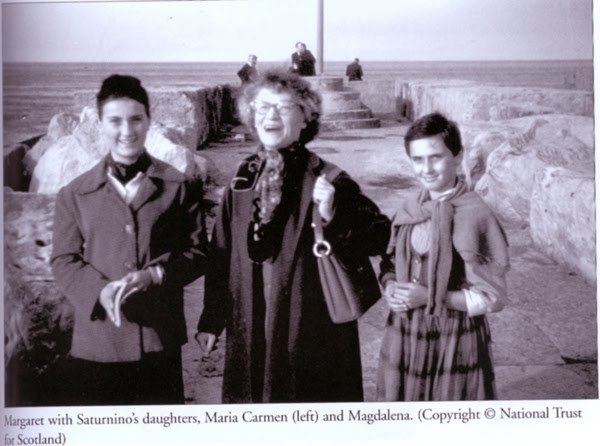Name John Campbell | ||
 | ||
Books Strange things, A Very Civil People, Canna: The Story of a Hebri, Canna - the Story of a Hebridea | ||
LoveontheLongestDay- Margaret & John Lorne Campbell of Canna. Scotland
Dr John Lorne Campbell FRSE LLD OBE (1906–1996) was a Scottish historian, farmer, environmentalist and folklore scholar.
Contents
Biography
Campbell was born in Argyllshire, Scotland, on 1 October 1906, the son of Col Duncan Campbell of Inverneill (on Loch Fyne) and Ethel Harriet Waterbury, an American.
He was educated at Cargilfield School in Edinburgh and then Rugby in England. He then attended St John's College, Oxford studying Rural Economy and Celtic, graduating in 1929 and receiving an MA in 1933. During this time, Prof John Fraser engendered a strong love of Gaelic and Scots folklore.
In the 1930s Campbell was living on the Hebridean island of Barra where, with the author Compton Mackenzie, he founded the Sea League to fight for the rights of local fisherman and organised a strike of motorists in protest at having to pay tax on an island with no made-up roads. In 1935 he married the American musician Margaret Fay Shaw, whom he met on the island of South Uist. In 1938 the couple bought the island of Canna, south of Skye, and went to live there in Canna House. He farmed the island for 40 years and made it a sanctuary for wildlife. At the same time he continued to record a disappearing Gaelic heritage and to write and publish extensively about Gaelic and Highland culture and life. In 1981 Campbell gave Canna to the National Trust for Scotland, but he continued to live on the island.
Campbell's partnership with Shaw was professional as well as marital. Together the couple assembled an important archive of Scottish Gaelic song and poetry, including manuscripts, sound recordings, photographs and film, in an effort similar to that carried on by Marjory Kennedy-Fraser in the 1900s. Campbell's three-volume collection of Hebridean folk songs, published between 1969 and 1981, is regarded as a valuable source by musicians and folklorists. The Campbell archive at Canna House is now in the possession of the National Trust for Scotland.
In addition to his other interests, in 1936 Campbell began to study the distribution and migration of insects. His Hebridean collection, started on Barra in 1936 was continued on Canna from 1938 with the use of a mercury vapour moth trap from 1951 onwards. The collection now consists of 30 cabinet drawers containing 283 species of macrolepidoptera, including the first recorded specimen of the noctuid moth Dianthoecia caesia taken in Scotland and some other surprises. He was the official migrant recorder for Canna from 1938, and was at times able to get the help of more than one head lighthouse keeper from Hyskeir.
He died on 25 April 1996 whilst on holiday in Fiesole in Italy, and in accordance with his wishes was "buried where he fell", but in 2006 his body was returned to Canna and reburied in a wood planted by himself. His widow remained at Canna House until her death in 2004 at the age of 101.
Interviews with Campbell and Shaw were broadcast in 1985 on Scottish Television, in a programme called "Canna – an Island Story".
A biography of Campbell, The Man Who Gave Away His Island by Ray Perman, was published by Birlinn in 2010.
